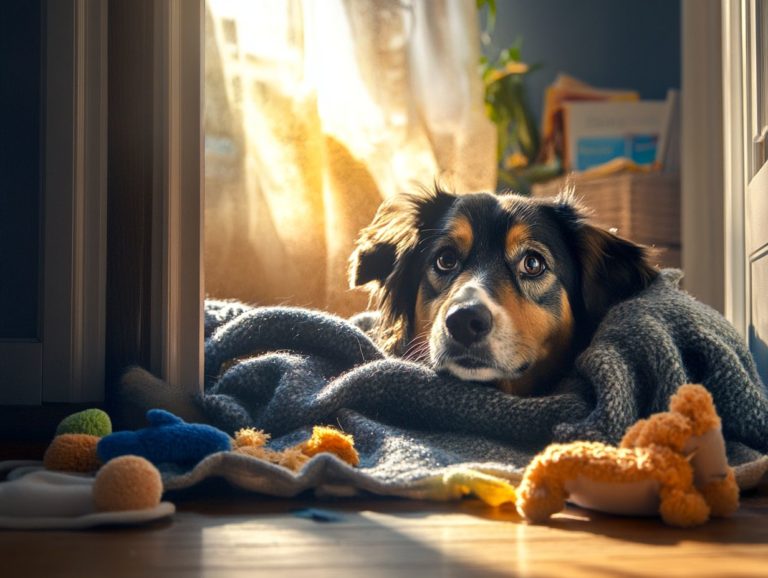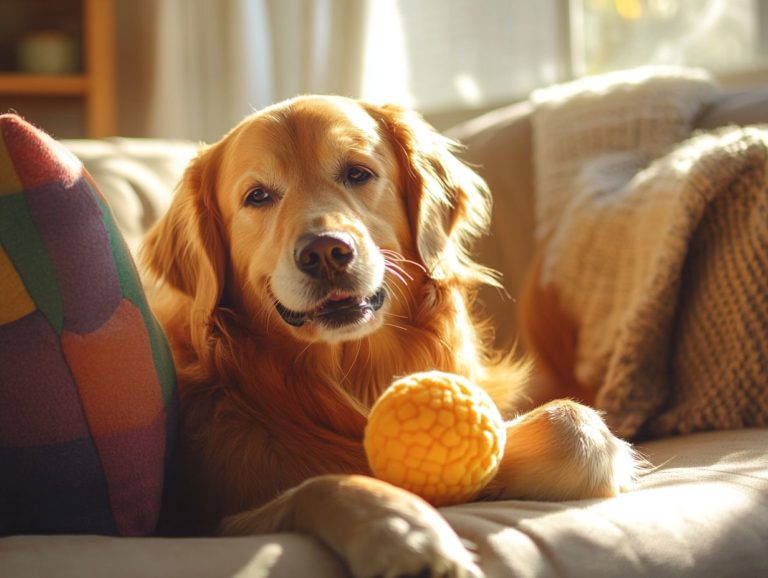Creating a Positive Training Environment for Pets
Creating a positive training environment is essential for nurturing a strong bond between you and your pet. A supportive atmosphere enhances the learning process and makes the experience enjoyable for everyone involved.
This article explores the many benefits of establishing a positive training space and offers valuable tips on how to set it up. You’ll also discover effective techniques, like giving rewards when your dog does something right, to enrich your training sessions.
It addresses how to tackle behavior issues, underscores the importance of consistency, and highlights the value of involving your entire family in this rewarding journey.
Get ready to transform your training experience into an exciting adventure for both you and your beloved pet!
Contents
- Key Takeaways:
- The Importance of a Positive Training Environment
- Setting Up the Training Space
- Creating a Safe and Comfortable Environment
- Positive Reinforcement Techniques
- Addressing Behavior Issues
- Consistency and Patience in Training
- Involving the Whole Family
- Frequently Asked Questions
- What is a positive training environment for pets?
- Why is it important to create a positive training environment for pets?
- How can I create a positive training environment for my pet?
- What are some examples of positive reinforcement techniques?
- Can a positive training environment be created for all types of pets?
- How long does it take to create a positive training environment for pets?
Key Takeaways:
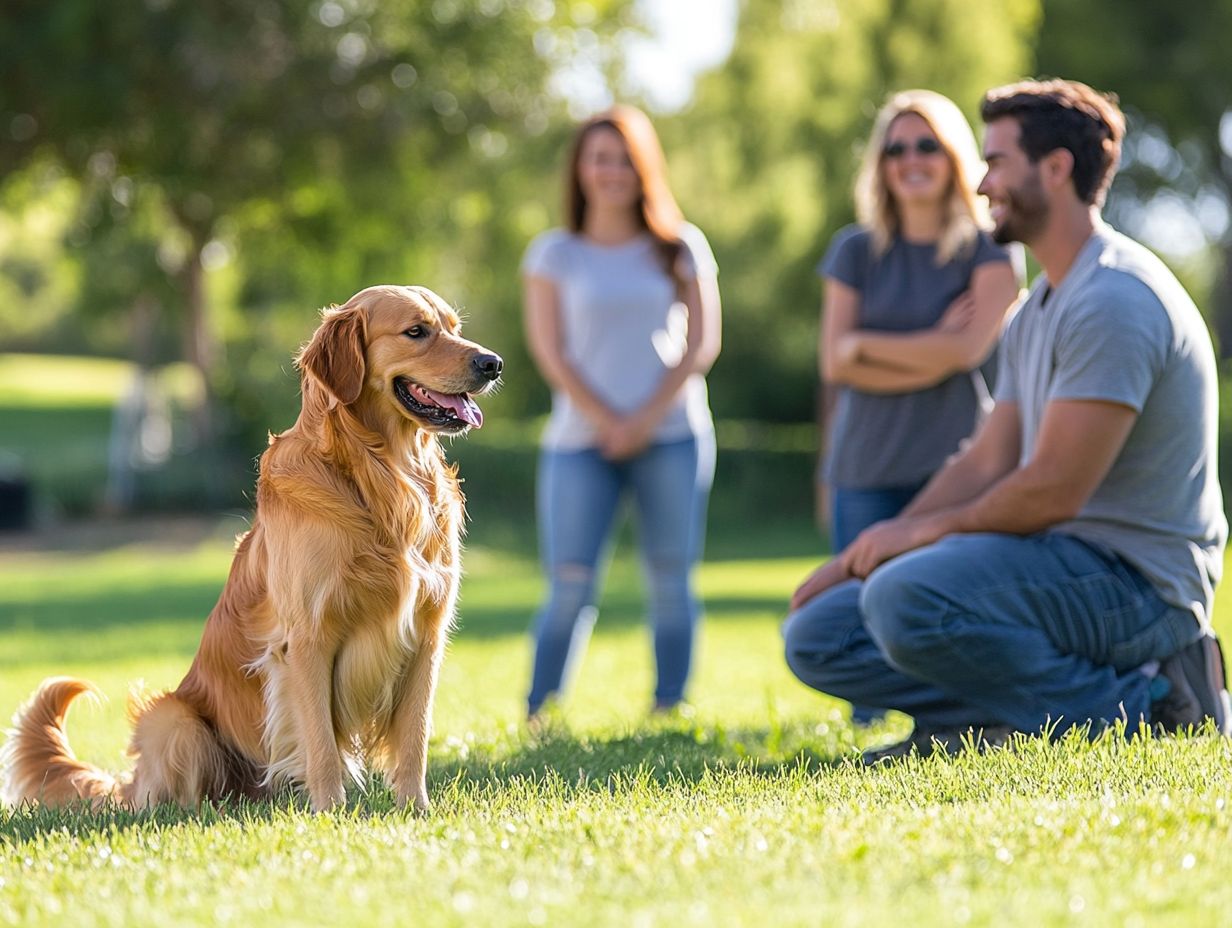
- A positive training environment benefits both pets and owners, creating a strong bond and promoting overall well-being.
- Creating a safe and comfortable training space is crucial for successful training.
- Consistency and patience, along with positive reinforcement, are essential for addressing problem behaviors.
The Importance of a Positive Training Environment
Creating a positive training environment is essential for you and your dog. It fosters a nurturing atmosphere that encourages desired behaviors and effective communication. For those with anxious pets, incorporating tips for training anxious pets at home can greatly enhance the learning experience and strengthen the bond between you and your canine companion.
By utilizing positive reinforcement techniques like treats and encouraging verbal cues you enable your dog to thrive in their training journey while reducing anxiety and minimizing negative behavior.
This approach aligns with leading organizations that promote kind training methods, such as the Association of Professional Dog Trainers and trainers like Victoria, who champion methods prioritizing kindness and respect rather than fear-based tactics.
Benefits for Pets and Owners
The benefits of a positive training environment are truly a game-changer for both you and your dog, particularly when considering the role of trust in training anxious pets. They lead to improved behavior and greater training success.
When you employ positive reinforcement techniques, you’re not just telling your pet what to do; you’re building a deeper bond and making the training experience enjoyable for both of you.
This approach also eases anxiety for your dog, who might otherwise feel stressed by harsh reprimands. It cultivates better obedience as your pet learns the ropes in a supportive environment.
Imagine a dog that once cowered at the sight of strangers blossoming into a confident companion through consistent reinforcement of calm behavior.
Positive training enhances the communication between you and your pet. This allows for a shared understanding of cues and commands, ensuring your dog’s needs are met. To further support this process, consider learning how to handle anxious pets during training sessions.
These successful outcomes don t just make learning fun they also provide a tremendous sense of achievement for you both, reinforcing your relationship and creating a happier home.
Setting Up the Training Space
Establishing an effective training space is crucial for creating an environment where dogs can truly thrive and display the behaviors you desire. Your training area should be free from distractions and equipped with all the essential tools think food treats, toys, and designated spots for various training methods.
A thoughtfully arranged training environment not only enhances focus but also fosters positive interactions between you and your dog, setting the stage for successful training methods for rescue pets.
Start today, and watch your dog flourish in a positive environment!
Creating a Safe and Comfortable Environment
Creating a safe and comfortable training environment is essential for effective dog training. It ensures that both you and your dog feel secure and confident throughout the learning journey, and creating a training schedule for anxious pets can further enhance this experience.
A thoughtfully designed space minimizes potential hazards and encourages positive reinforcement. This allows you to focus on shaping desired behaviors without distractions.
Beyond reducing risks, features like appropriate flooring can greatly enhance the overall experience. Choosing non-slip surfaces significantly diminishes the likelihood of accidents and discomfort for your dog, fostering a sense of stability.
Keeping noise levels low promotes concentration and helps with relaxed learning. Space is equally important. Ample room allows your dog to move freely and safely while engaging with you.
To elevate the training experience and maximize training success, consider:
- Setting up designated zones for different activities
- Using soft mats for added comfort
- Creating quiet areas where your dog can unwind between exercises
Positive Reinforcement Techniques
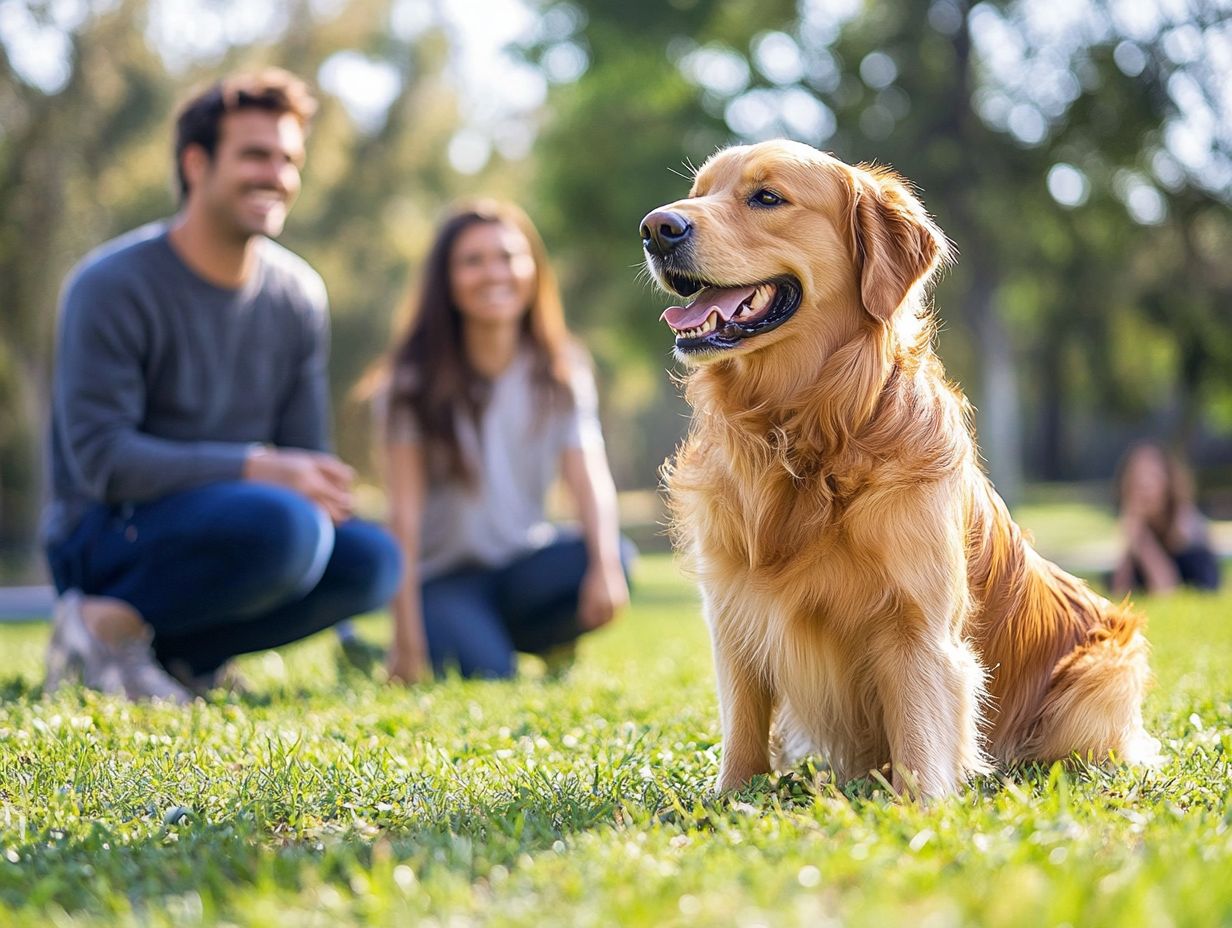
Figure 1: Examples of positive reinforcement techniques in action.
Positive reinforcement techniques are essential in dog training. They effectively cultivate desired behaviors through rewards and encouragement. This results in enhanced learning outcomes.
By employing a range of training methods, such as food treats and verbal cues, you can inspire your dog to display the behaviors you wish to encourage. This creates a more productive and enjoyable training experience for both of you.
Using Rewards and Praise
Incorporating rewards and praise into your positive reinforcement strategy is essential for motivating your dog. This encourages desirable behavior during training sessions.
When you provide food treats, toys, or verbal praise at just the right moments, you create a powerful learning environment that fosters trust and enthusiasm.
Consider that different types of rewards can cater to your dog s individual preferences. For instance, while some dogs may be all about those tasty morsels, others might perk up at the sight of their favorite squeaky toy or even a simple, enthusiastic verbal affirmation.
The secret lies in identifying which motivators resonate most with your dog. Timing is everything. Delivering rewards immediately after the desired behavior helps reinforce the crucial connection between action and consequence.
Consistent use of these techniques can significantly improve your training outcomes. This ensures that positive interactions remain a fundamental aspect of your dog s learning journey.
Addressing Behavior Issues
Addressing behavior issues in dogs is essential for effective training and the overall well-being of your canine companion. You must take a thoughtful and strategic approach to address behavior issues effectively!
By identifying the root causes of negative behaviors whether they stem from anxiety or aggression you can implement the right training techniques. This not only promotes positive outcomes but also significantly enhances your dog s quality of life.
Identifying and Correcting Problem Behaviors
Identifying and correcting problem behaviors is a crucial part of behavior modification. It enables you to address your dog’s needs effectively while cultivating a positive learning atmosphere.
By recognizing signs of negative behavior and understanding their underlying causes, you can customize your approach to help your dog conquer challenges like anxiety or aggression.
To achieve this, you can employ various methods, including keen observation, engaging with owners, and maintaining behavior journals. Techniques such as clicker training, a method where a small device makes a sound to mark desired actions, or reward systems can be particularly effective, as they emphasize positive reinforcement to promote good behavior.
Take, for example, a case where a dog displayed fear-based aggression toward strangers. The trainer meticulously documented the dog s reactions and gradually desensitized it to new encounters. This was accomplished by pairing the presence of new people with treats, allowing the dog to create positive associations with these interactions.
Over time, this proactive strategy led to remarkable improvements in the dog’s behavior, showcasing the power of well-structured behavior modification techniques.
Consistency and Patience in Training
Consistency and patience are vital elements in your journey of successful dog training. These qualities ensure that both you and your dog stay in sync throughout the learning process.
By consistently applying the same training methods, you cultivate trust and understanding. This ultimately enhances the effectiveness of the training experience. This approach reinforces rewarding training methods, making the entire process more enjoyable for both you and your furry companion.
Keys to Successful Training
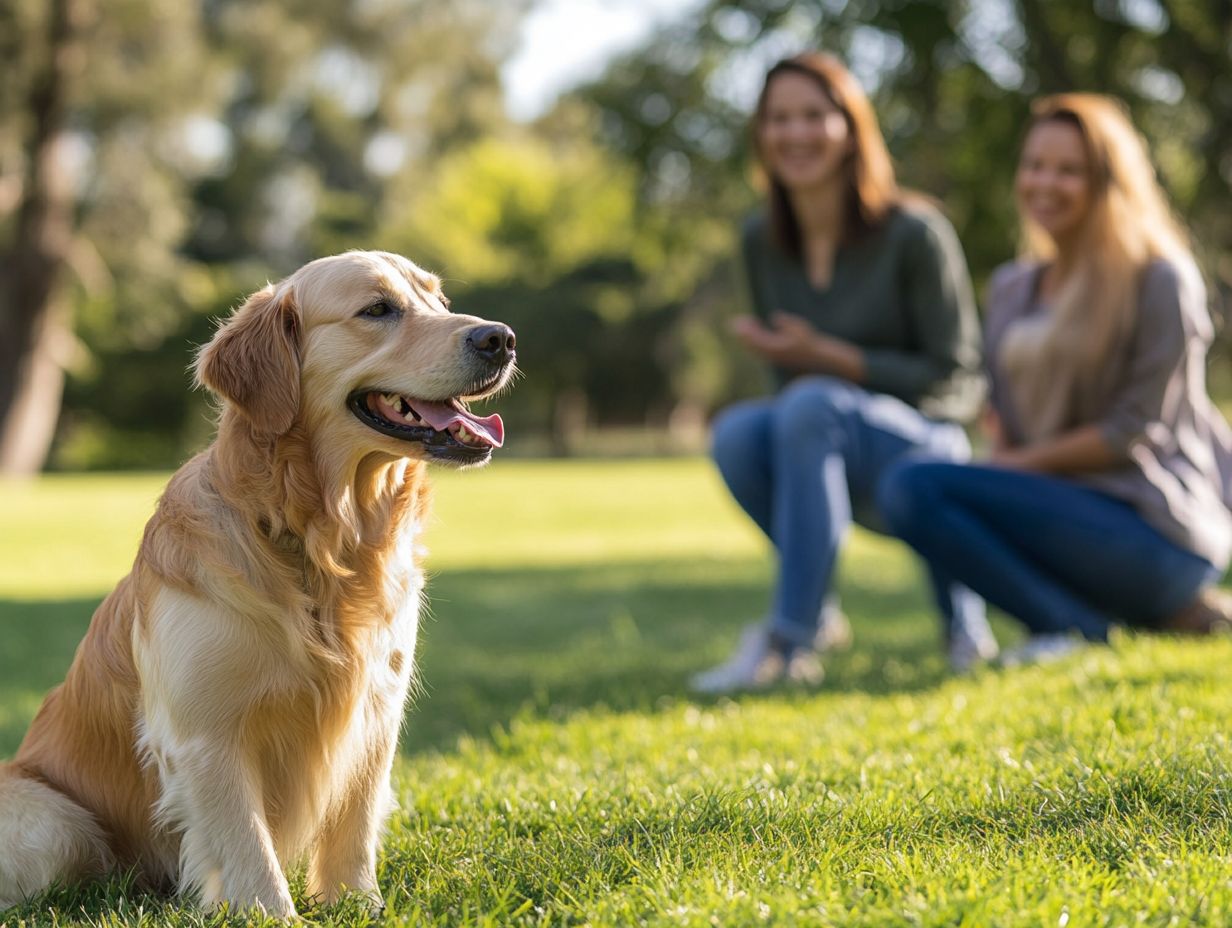
The keys to successful training hinge on a masterful blend of consistency, patience, and rewarding training methods. This enables you to craft a nurturing learning environment for your dog.
By steadfastly adhering to these principles, you can significantly enhance your ability to shape desired behaviors and achieve your training goals.
For example, teaching your dog to sit requires consistent use of the same command and hand signal. Patience is vital; your dog may not respond right away. Your calm demeanor plays a crucial role in maintaining a low-stress atmosphere, encouraging your dog to thrive.
Celebrate progress at any stage. A well-timed treat or a word of praise can transform initial hesitance into enthusiastic participation. This demonstrates how these principles culminate in effective and rewarding learning experiences.
Involving the Whole Family
Involving the entire family in the dog training process is crucial for meeting your pet’s needs and achieving training success. By creating a unified approach to rewarding training, each family member can effectively communicate with the dog and reinforce desired behaviors.
This makes training enjoyable for your dog and family, creating a harmonious environment that benefits both your pet and your household.
Getting Everyone on Board with Positive Training
Getting everyone in the family on board with rewarding training methods is essential for fostering consistency and effective communication throughout the training process. When all family members understand and commit to the same methods, your dog is far more likely to respond positively and exhibit the desired behaviors.
To kick things off, consider organizing a family meeting focused on discussing your training goals and the importance of positive reinforcement. Sharing articles or videos that showcase successful techniques can also be a game-changer for those visual learners in the group.
You might even want to role-play different training scenarios together. This will help everyone practice consistency in cues and commands. Establishing a unified approach whether through verbal commands or hand signals is crucial to avoid confusing your dog.
Regular check-ins can reinforce everyone s commitment. This allows for adjustments as needed and ensures that training remains a shared responsibility. By cultivating an atmosphere of collaboration and support, family members can collectively strengthen their bond with the dog while enhancing its learning experience.
Frequently Asked Questions
What is a positive training environment for pets?
A positive training environment for pets is a safe, structured, and supportive space where pets can learn and develop new behaviors through positive reinforcement techniques, which is essential for fostering a positive environment for anxious pets.
Why is it important to create a positive training environment for pets?
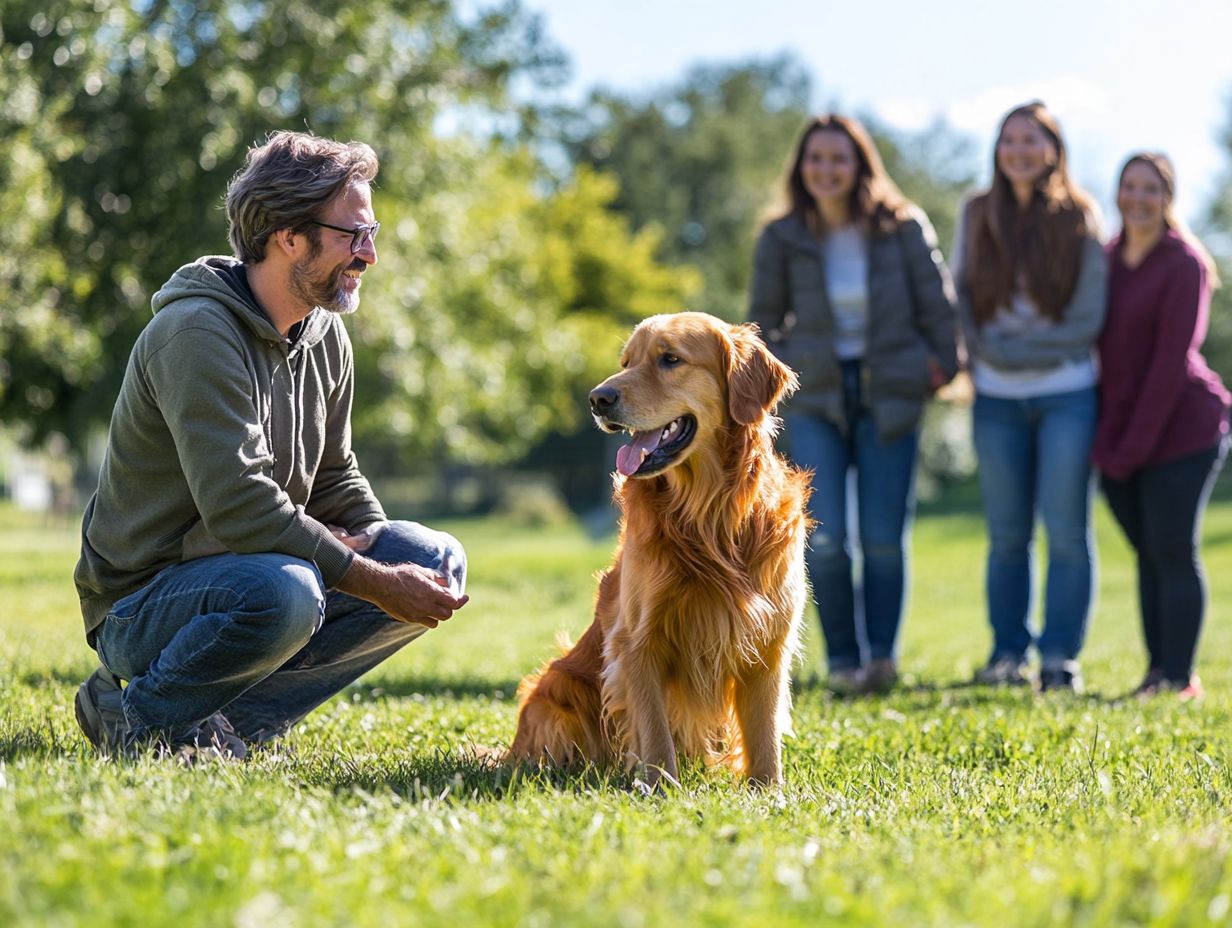
Creating a positive training environment for pets is crucial. It helps foster a strong bond between pet and owner, promotes good behavior, and reduces the risk of negative behaviors such as aggression or anxiety. For those with anxious pets, creating a safe space can be particularly beneficial.
How can I create a positive training environment for my pet?
You can create a positive training environment for your pet by setting clear rules and boundaries. To achieve a more peaceful atmosphere, consider exploring how to train your pet for a calmer home through positive reinforcement techniques, providing a safe and comfortable space, and being consistent and patient with your training methods.
What are some examples of positive reinforcement techniques?
Positive reinforcement techniques include rewards like treats, praise, and playtime.
You can also use clicker training and shape behaviors step by step.
Can a positive training environment be created for all types of pets?
Yes, you can create a positive training environment for all pets.
This includes dogs, cats, birds, and even exotic animals.
The key is understanding your pet’s specific needs and behaviors.
Tailor your training approach to fit them.
How long does it take to create a positive training environment for pets?
The time varies based on each pet’s learning abilities.
With consistency and patience, you can establish a positive training environment in a matter of weeks or months.
Start today and watch the transformation in your pet!





